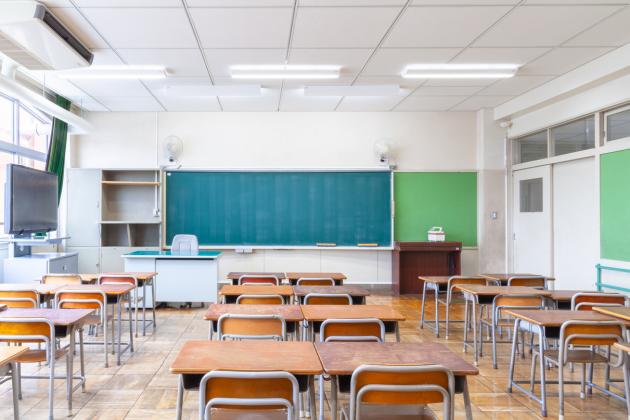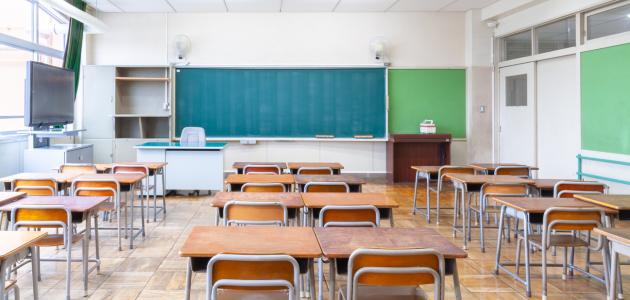- State & Local
- California
The Beverly Hills Unified School District spends about $56,000 per student per year and is one of the highest performing school districts in the state. But California schools don’t have to spend nearly this much to achieve similar performance. The Kairos Public Charter Schools system in Vacaville, California, spends only about 25 percent as much per student as Beverly Hills and delivers learning outcomes that are nearly as good. Nowhere is this more important than in teaching kids with learning disabilities, in which Kairos test scores are just behind those in Beverly Hills and in other high-performing school districts, including the Santa Monica-Malibu school district, with Kairos scoring 44 points higher than California averages for students with disabilities based on the California State Education Department’s Dashboard.
The key to Kairos’s success is having a very flexible instructional and organizational model, allocating funding to where the return is the highest, and having a team of teachers and staff who are free to operate outside the rigid confines of union work rules. It turns out that this is crucial for the ability of Kairos to deliver exceptional education on a reasonable budget, shedding light on why most traditional public K‒12 schools, which have unionized faculty and staff, continue to fail their students, despite enormous increases in funding over time.
There is a common misconception that public charter schools select students who will succeed and avoid students who will struggle. This is inaccurate. Kairos operates on a lottery system, as do other public charter schools. Kairos does not find out whether a student has a learning disability until after a family chooses to enroll a child. Consequently, the percentage of students with learning disabilities at Kairos (12 percent) is nearly identical to the percentage across all public schools (12.5 percent).
Jared Austin, the executive director of Kairos, explained in an interview how a family with a child with a learning disability that chooses to enter the Kairos lottery is a family whose child has typically been left behind in a traditional school. For the families who ultimately enroll, Kairos calls them in the spring prior to the beginning of the fall academic year so they can begin to build relationships and learn about the children and their needs. Austin notes that Kairos special education case managers have no more than eighteen children on their caseload, even though state regulations permit a special education teacher to have as many as twenty-eight children on a caseload. Every Kairos classroom with children with disabilities has a co-teacher model in place to support all kids. Kairos has a total of nineteen special education faculty and staff for approximately seventy-four children with learning disabilities.
Austin described how Kairos teaches other students to support and understand kids with disabilities. He noted that teachers work hard to make sure there is no stigma present and that there is plenty of peer-to-peer support going on in the classroom within an inclusive learning model.
Betsy Madigan, who coordinates special education learning at Kairos, remarked at just how unique Kairos is in the special education sphere. “I came to Kairos after working in a variety of school settings, including working in Missouri, where there was considerable stigma attached to the special education kids and where they were taught separately, apart from the other students,” she said.
Austin also noted that including special education kids within the broader student population does not mean that other students get bored or that their learning suffers. “We help our kids develop kindness and empathy, we help them become self-directed learners, and they know that if they finish their work early, there is much more for them to discover and help others meet their goals,” he said.
Kairos school faculty and staff are not unionized. Austin said that this has made all the difference. “Our teachers and staff enjoy the special campus that we have, and they appreciate the freedom to do their jobs to the best of their ability. Collective bargaining agreements specify a host of work rules that govern pretty much everything that is done, ranging from what can be done, when it can be done, how it is to be done, and by whom. But helping kids learn, particularly kids with learning disabilities, doesn’t conform to a one-size-fits-all collective bargaining agreement. Traditional schools are stuck within a box of these work rules, a box that they can’t escape, whereas we are free to create new ways to teach without these confines.”
Austin noted that he and other Kairos administrators value their faculty and staff enormously. They include them in discussions regarding decision making and budgeting in what they call a model of shared leadership, and they invest in helping their teachers build new skills. “We provide our teachers with ten days of professional development each year, compared to two to four days of professional development at traditional schools,” Austin said.
Perhaps the most important characteristic of Kairos public schools is that their students want to be there. Chronic absenteeism is a huge problem within California schools but is virtually unheard of at Kairos, because Kairos makes school an enjoyable experience for their students. And this is why Kairos recently had a waiting list of over one thousand children and why Kairos is completing a new campus to accommodate many more students.
At one time, about 35 percent of private sector jobs were unionized. But this share has been declining for decades and is now down to 6 percent of private sector employment. This decline reflects the fact that most workers prefer negotiating for themselves rather than being stuck within a collective bargaining agreement that governs their entire relationship with their employer.
The union model that is endemic within public education today is largely the failed model of unions from the 1950s and 1960s, when labor relations were conflicted, when there were frequent strikes, and when there was mistrust on both sides. And this is exactly what we continue to see in public K‒12 schools in California, in which education unions were unwilling to reopen schools after the pandemic, where teachers go on strike, and where students, particularly those with learning disabilities, suffer.
California spent over $100 billion on K‒12 public education during the 2022‒23 fiscal year, nearly as much as the entire state budget of Florida. California spent $47.3 billion on K‒12 education during the 2010‒11 fiscal year. Despite this budget increase, learning outcomes for California kids remain dismal, as only about one in four are proficient in math, and less than one in three are proficient in reading, based on federal education standards.
The Kairos Public Schools model shows what is possible when a school can build on a shared foundation of trust and vision to serve all students to the best of their ability. This will never be the case within traditional schools, unless the failed collective bargaining model of yesteryear that is entrenched in our public schools is replaced. Sadly, the political interests that control California’s $100 billion K‒12 budget will never permit such a reform, dooming millions of California kids to a grossly deficient education.

















